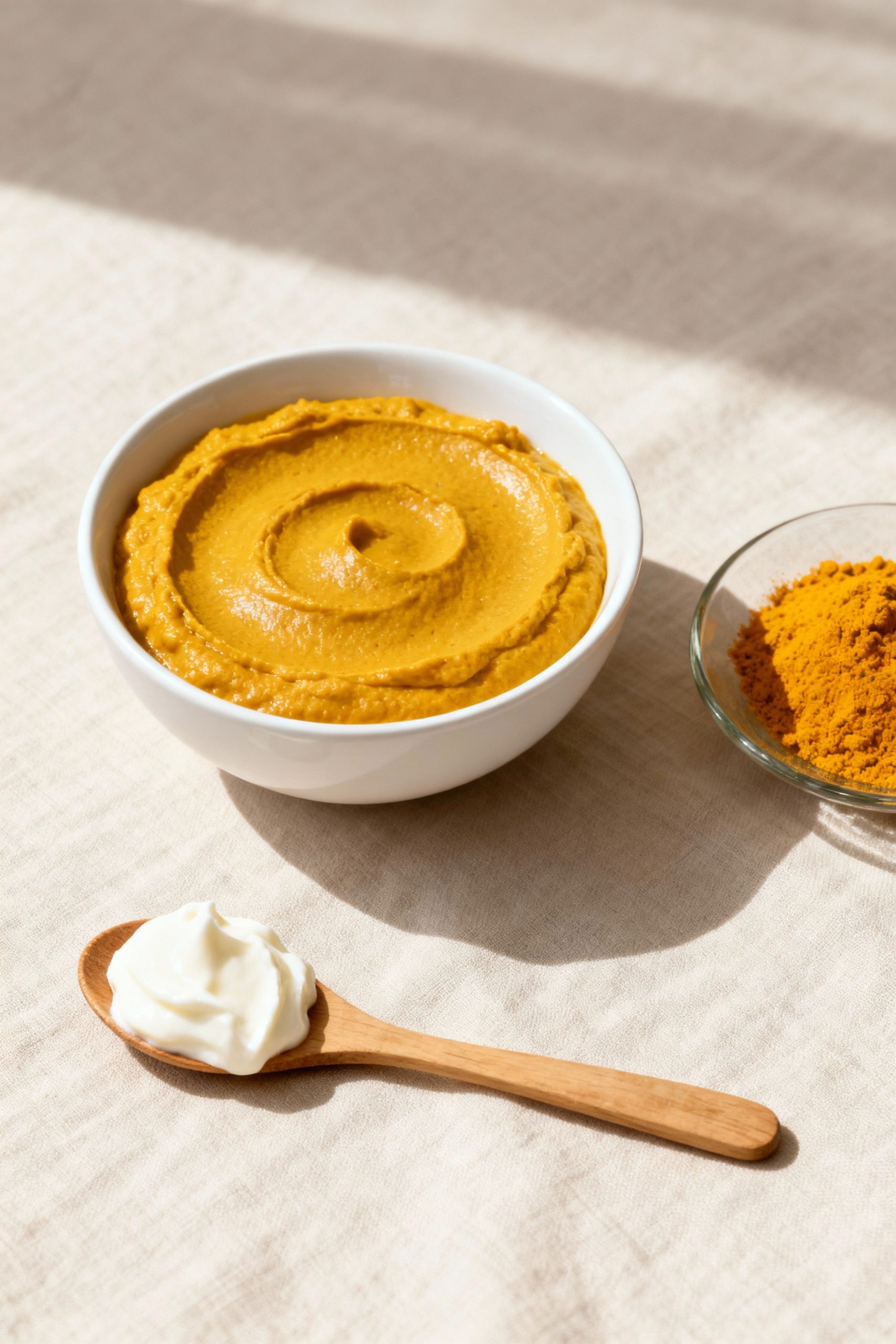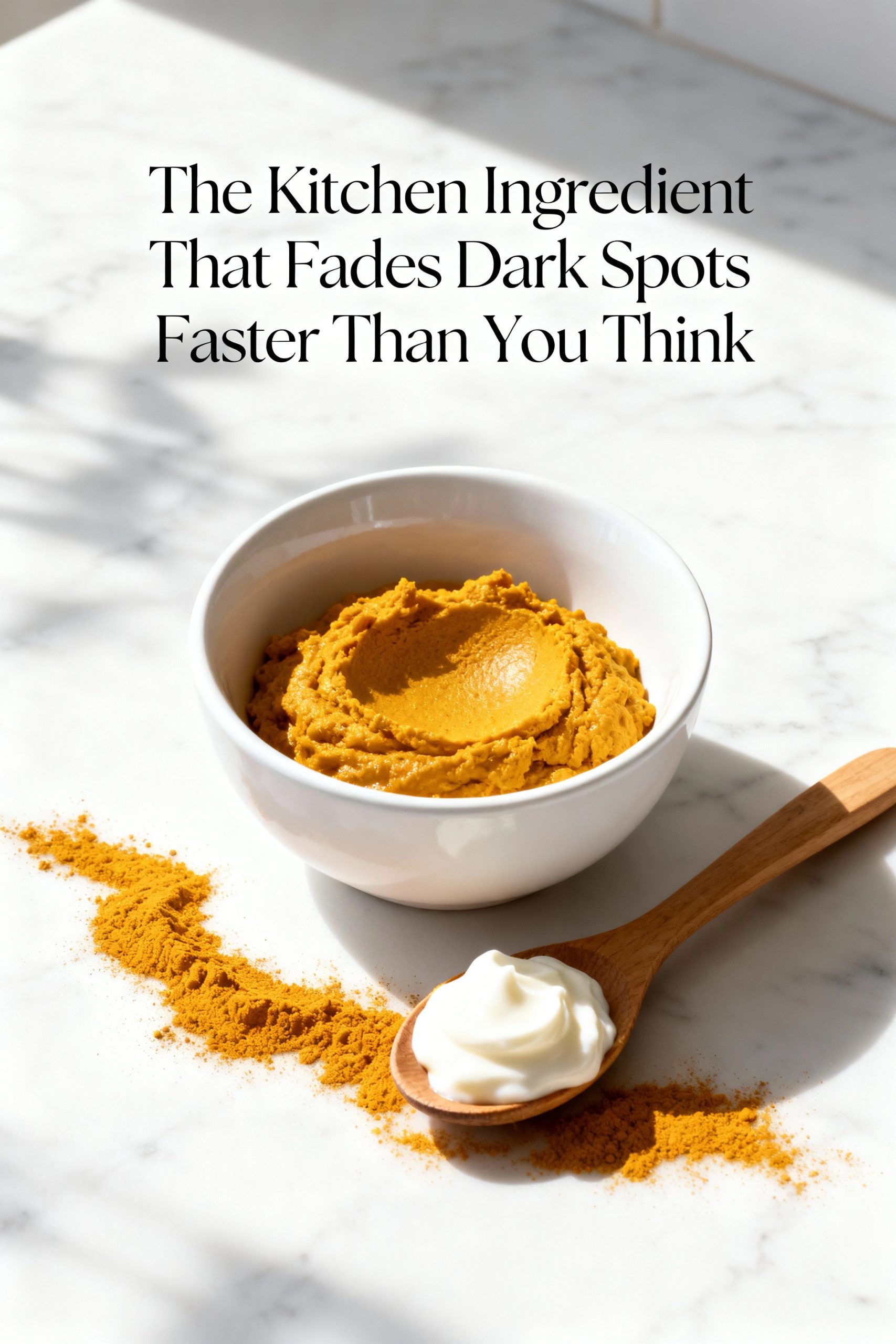Navigating the world of skincare to find a genuine solution for dark spots can be an overwhelming journey. From expensive serums to complex chemical peels, the options are endless. But what if one of the most effective aids for achieving a luminous, even-toned complexion wasn’t in a high-end bottle, but rather, tucked away in your kitchen cabinet? It’s time to shine a light on a humble yet potent golden spice that has been a treasured beauty staple for centuries.
This ingredient offers a gentle, time-tested approach to addressing hyperpigmentation, a common concern that stems from everything from sun exposure to past blemishes. Let’s delve into the science and practical application of this remarkable kitchen remedy.
The Golden Spice: Unveiling Turmeric’s Skin-Enhancing Qualities
The hero ingredient is turmeric (Curcuma longa). While globally renowned for its culinary uses, its role in traditional wellness and beauty rituals, particularly in Ayurveda, is legendary. Its brilliant golden-yellow hue comes from compounds called curcuminoids, the most significant of which is curcumin. Curcumin is the powerhouse active ingredient responsible for turmeric’s celebrated skin-supporting properties.
The Science: How Turmeric Addresses Hyperpigmentation
To understand how turmeric works, we first need to understand dark spots. Hyperpigmentation is the result of excess melanin production in the skin. This can be triggered by sun damage (sun spots), inflammation (post-inflammatory hyperpigmentation or PIH from acne), or hormonal changes.
Curcumin intervenes in this process in a few key ways:
- Influences Melanin Synthesis: Research has shown that curcumin acts as a tyrosinase inhibitor. Tyrosinase is the key enzyme responsible for controlling the rate of melanin production. By gently inhibiting this enzyme, curcumin helps to manage melanin synthesis, which can lead to a gradual fading of existing dark spots and a reduction in the appearance of new ones.
- Powerful Antioxidant Action: Our skin is constantly exposed to environmental stressors like UV radiation and pollution, which generate free radicals. These unstable molecules damage skin cells and can trigger an inflammatory response that leads to hyperpigmentation. Curcumin is a potent antioxidant that helps neutralize these free radicals, protecting the skin and supporting its natural healing process.
- Soothes the Skin: For dark spots caused by inflammation (like the marks left after a blemish), turmeric’s well-documented soothing properties are incredibly beneficial. By calming the skin, it helps to mitigate the inflammatory response that can lead to discoloration.
How to Prepare a Simple Yet Effective Turmeric Paste
Preparing your own turmeric-based spot treatment is incredibly simple. This recipe is a fantastic starting point, combining turmeric with other beneficial ingredients for a nourishing application.
What You’ll Need:
- 1 teaspoon of high-quality, organic turmeric powder: Ensure it’s pure turmeric, not a curry powder blend.
- 2 teaspoons of a base ingredient:
- Full-Fat Plain Yogurt: Contains lactic acid, a mild alpha-hydroxy acid (AHA) that gently exfoliates the skin, helping to slough away discolored skin cells.
- Raw Honey: A natural humectant that hydrates and soothes the skin.
- Aloe Vera Gel: Excellent for calming and hydrating sensitive or irritated skin.
- Optional – a few drops of liquid: Milk or rose water can be used to achieve the perfect consistency.
Step-by-Step Instructions:
- In a small glass or ceramic bowl, place your turmeric powder.
- Add your chosen base (yogurt, honey, or aloe vera) and mix thoroughly until you have a smooth, lump-free paste.
- If the paste feels too thick to spread easily, add a few drops of milk or rose water and stir until it reaches a creamy, manageable consistency.
- On a freshly cleansed face, use clean fingers or a soft brush to apply the paste. You can apply it as a spot treatment directly on the dark spots or as a thin layer across your entire face, carefully avoiding the delicate eye and mouth areas.
- Allow the paste to rest on your skin for 10-15 minutes. It should feel slightly tacky but not be completely bone-dry.
- Gently rinse it off with lukewarm water, using small circular motions. Be thorough but not abrasive. Pat your skin dry with a clean, soft towel.

An Important Tip for Best Results
Turmeric is famously pigmented and can leave a temporary faint yellow tint, especially on fairer skin. To minimize this, do not leave the paste on for longer than 15 minutes. If you notice any light staining, it can typically be removed with a gentle facial oil on a cotton pad followed by your regular cleanser. Always perform a patch test on your inner arm 24 hours prior to facial application to ensure you have no sensitivity.
Patience and Protection: The Keys to Success
Natural approaches require consistency. For noticeable results, incorporate this routine 1 to 2 times per week for several weeks.
Just as important is sun protection. UV exposure is a primary cause of hyperpigmentation and will undermine your efforts. Daily application of a broad-spectrum sunscreen is the most critical step you can take to prevent dark spots and allow your skin to heal.
By embracing this simple, time-honored tradition, you are nurturing your skin with a wholesome ingredient known for its remarkable benefits. It’s a wonderful reminder that sometimes the most effective solutions are the ones that have been with us all along.


